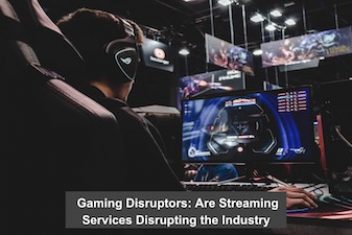In the digital age, the rapid proliferation of visual content across online platforms has presented unique challenges for content moderation. With millions of images uploaded daily,ensuring these visuals adhere to community standards and laws is paramount for maintaining user trust and safety. This article explores the critical role of moderating visual content, the hurdles involved, and effective strategies for addressing these challenges.
Understanding the Importance of Visual Content Moderation
Visual content, from photos to graphics, plays a significant role in how information is shared and consumed online. However, this ease of sharing also opens the door to potential misuse, where inappropriate or harmful images can be disseminated widely. The consequences of failing to adequately moderate such content range from damaging a platform’s reputation to legal repercussions and, most importantly, compromising user safety.
Read: How visual management can increase productivity in companies
The Hurdles of Moderating Visual Content
Moderating visual content effectively is no small feat, given the volume of uploads and the nuanced nature of harmful content.
Volume and Speed
The sheer amount of visual content uploaded every minute makes manual moderation impractical. Platforms must find a way to quickly review images without sacrificing accuracy.
Contextual Understanding
An image’s appropriateness can heavily depend on its context. Automated systems may struggle to interpret this context, leading to false positives or negatives.
Evolving Standards
What is considered acceptable can change or vary between communities. Moderation systems must adapt to these evolving standards to remain effective.
Strategies for Effective Moderation
To tackle these challenges, platforms are adopting technological solutions and human expertise.
Leveraging Technology
Artificial intelligence (AI) and machine learning (ML) technologies have become invaluable for scanning and identifying potentially harmful images at scale. With increasing accuracy, these systems can be trained to recognize specific types of content, such as explicit material or violent imagery.
Human Review
Despite technological advances, human moderators play a crucial role in the moderation process. They provide the necessary context and nuance that automated systems might miss, making final decisions on content that AI flags as potentially problematic.
Read: Unlocking the Power of Data Visualization with Line Charts
Continuous Learning
Both AI systems and moderation policies must evolve continuously to keep up with new types of harmful content and changing community standards. This involves regular updates to AI training data and moderation guidelines.
User Empowerment
Empowering users to report inappropriate content is another effective strategy. User reports can help identify content that automated systems miss and provide valuable data to improve moderation algorithms.
Implementing a Comprehensive Moderation Solution
For platforms seeking to implement a comprehensive moderation solution, combining automated tools with human oversight is key. Services like image moderation offer a balanced approach, utilizing advanced AI to handle the bulk of moderation tasks while employing human experts for nuanced decisions. This dual approach ensures both efficiency and accuracy in keeping online spaces safe and respectful.
Reflecting on the Path Forward
As digital platforms continue to grow and evolve, so too will the challenges of visual content moderation. The strategies outlined here provide a foundation for addressing these challenges, but ongoing innovation and adaptation will be necessary. By prioritizing the safety and well-being of users, platforms can foster more positive and inclusive online communities.
If you like the content, we would appreciate your support by buying us a coffee. Thank you so much for your visit and support.



